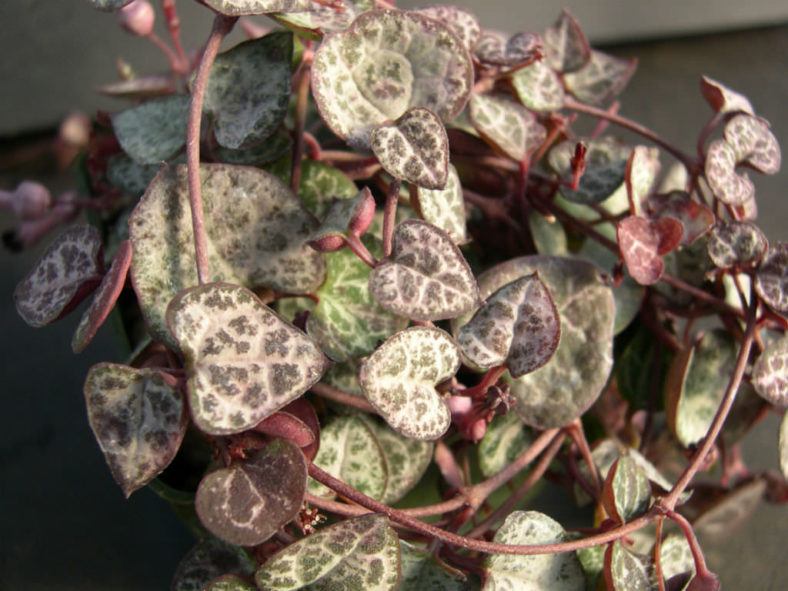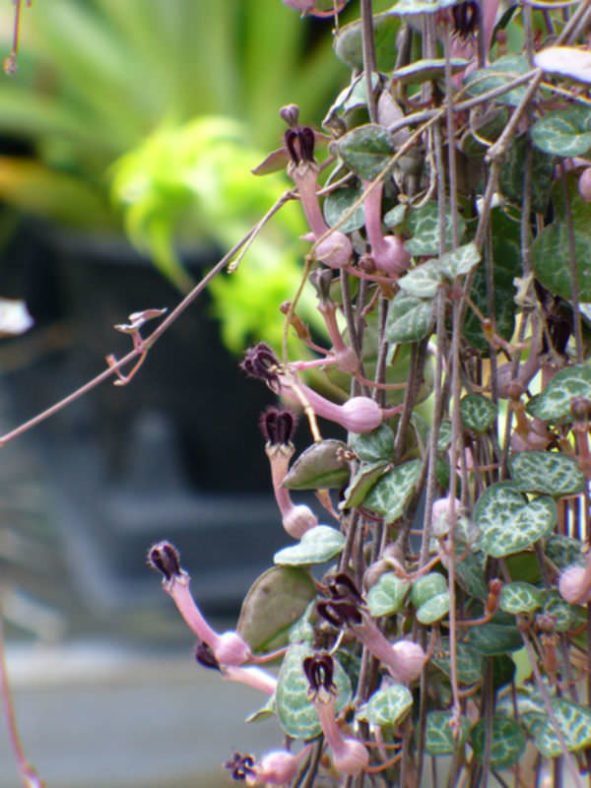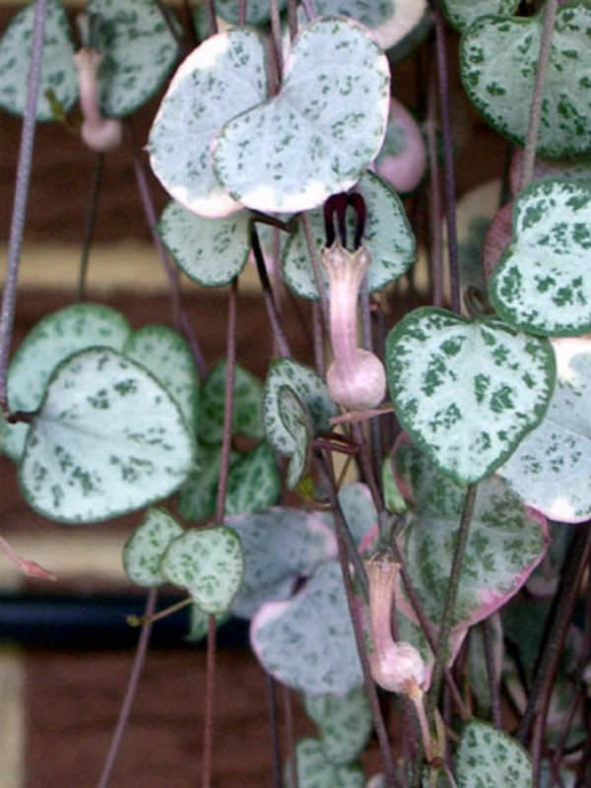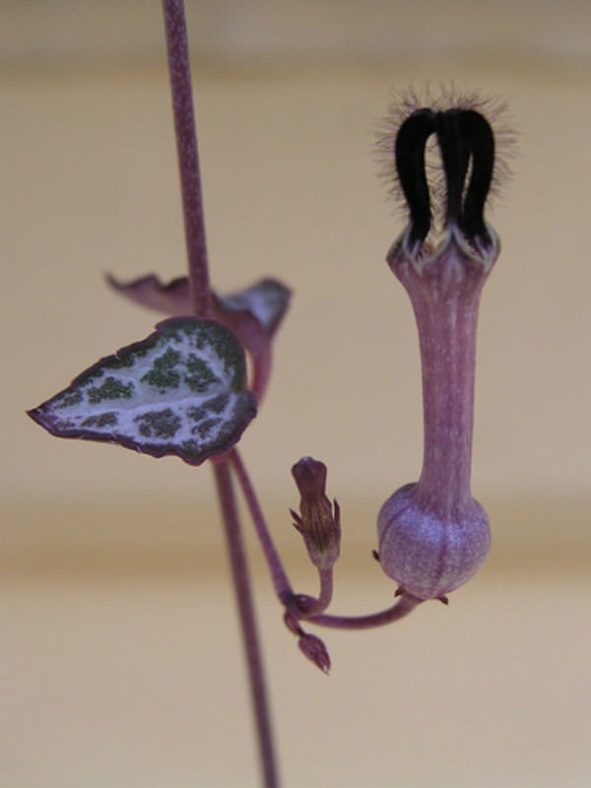Scientific Name
Ceropegia woodii Schltr.
Common Name(s)
Chain of Hearts, Collar of Hearts, String of Hearts (SOH), Rosary Plant, Rosary Vine, Hearts Entangled, Hearts-on-a-String, Sweetheart Vine, Heart Vine
Synonym(s)
Ceropegia linearis subsp. woodii
Scientific Classification
Family: Apocynaceae
Subfamily: Asclepiadoideae
Tribe: Ceropegieae
Genus: Ceropegia
Etymology
The specific epithet "woodii" (pronounced "WOOD-ee-eye") honors John Medley Wood (1827-1915), an English-born South African botanist, curator of the Durban Botanic Garden, and director of the Natal Government Herbarium of South Africa. This species was first described in 1894 by Rudolph Schlechter based on specimens collected by John Medley Wood and Maurice Smethurst Evans in KwaZulu-Natal in 1881.
Origin
Ceropegia woodii is native to South Africa, Swaziland, and Zimbabwe.
Description
Ceropegia woodii, also known as Ceropegia linearis subsp. woodii, is a trailing succulent with slender stems and heart-shaped leaves. The stems can grow up to 13.1 feet (4 m) long. The leaves are green with white to gray and light purple markings on the upper surface and pink to light purple on the underside. They can measure up to 0.8 inches (2 cm) in length and width. With age, the plant develops a woody caudex at its base.
The flowers usually appear from late summer to early fall and last up to 6 weeks. They are pink, tubular with a small, balloon-like base, and can grow up to 0.8 inches (2 cm) in length. The lobes at the apex are dark purple with purple hairs and form arch-like structures. The fruits are horn-shaped follicles that contain flat seeds with parachute-like tufts of white hairs.
Forms

Hardiness
USDA hardiness zones 11a to 11b: from 40°F (4.4°C) to 50°F (10°C).
How to Grow and Care
A gritty compost is suitable, and clay pots help with drainage, especially for species with white, thickened roots and for those forming large tubers. Ceropegias appreciate water and a little fertilizer during warm weather, although some watering care is required for the more difficult species. The vine-like species can suffer from prolonged drought.
Typically, many of these species grow and climb naturally among bushes, which provide shade and humidity to the base, while the vegetative growth is in the light. Where tubers occur, they are best planted on the surface of the compost, and the vegetative growth is allowed to twine around supports or trail down from a hanging pot. The latter growth mode has the advantage of not using valuable bench space. Small tubers formed at joints in the thin stems of some species can be used for propagation. If the tuber rots or dries out, don't panic. If some of the top growth is still in reasonable condition, it may be possible to save the plant by re-rooting stems in damp gravel.
Learn more at How to Grow and Care for Ceropegia.
Links
- Back to genus Ceropegia
- Succupedia: Browse succulents by Scientific Name, Common Name, Genus, Family, USDA Hardiness Zone, Origin, or cacti by Genus
Photo Gallery
Click on a photo to see a larger version.


